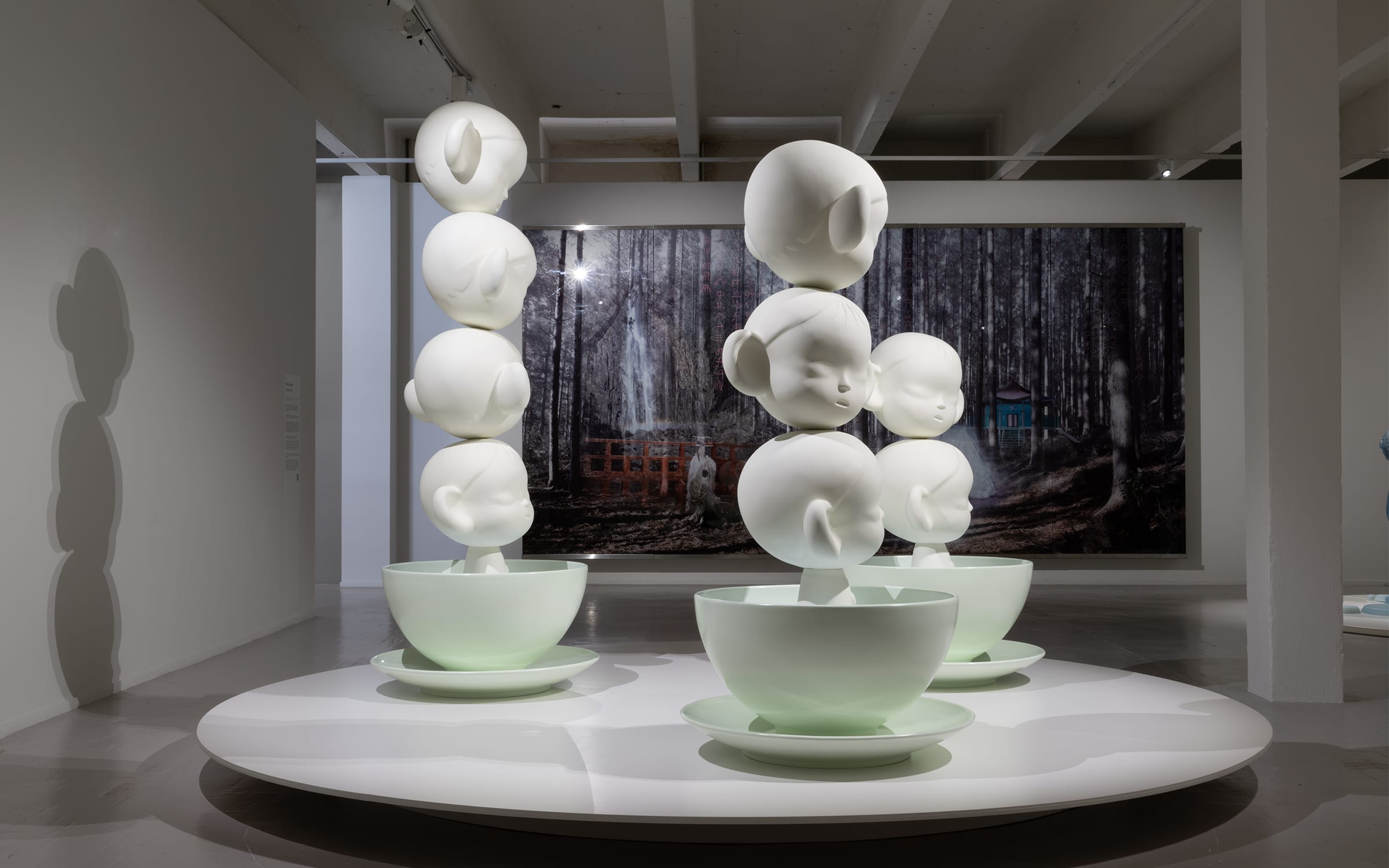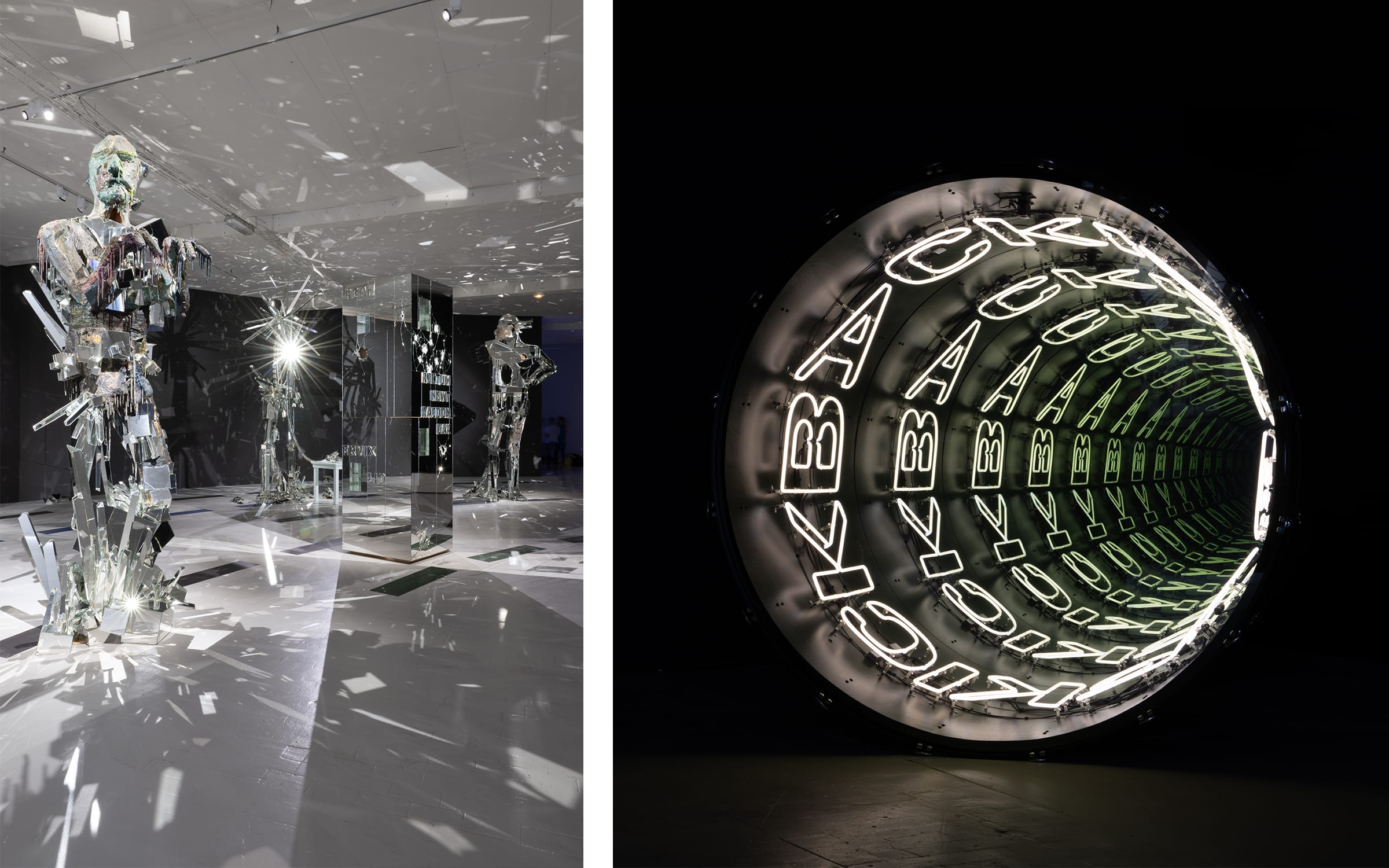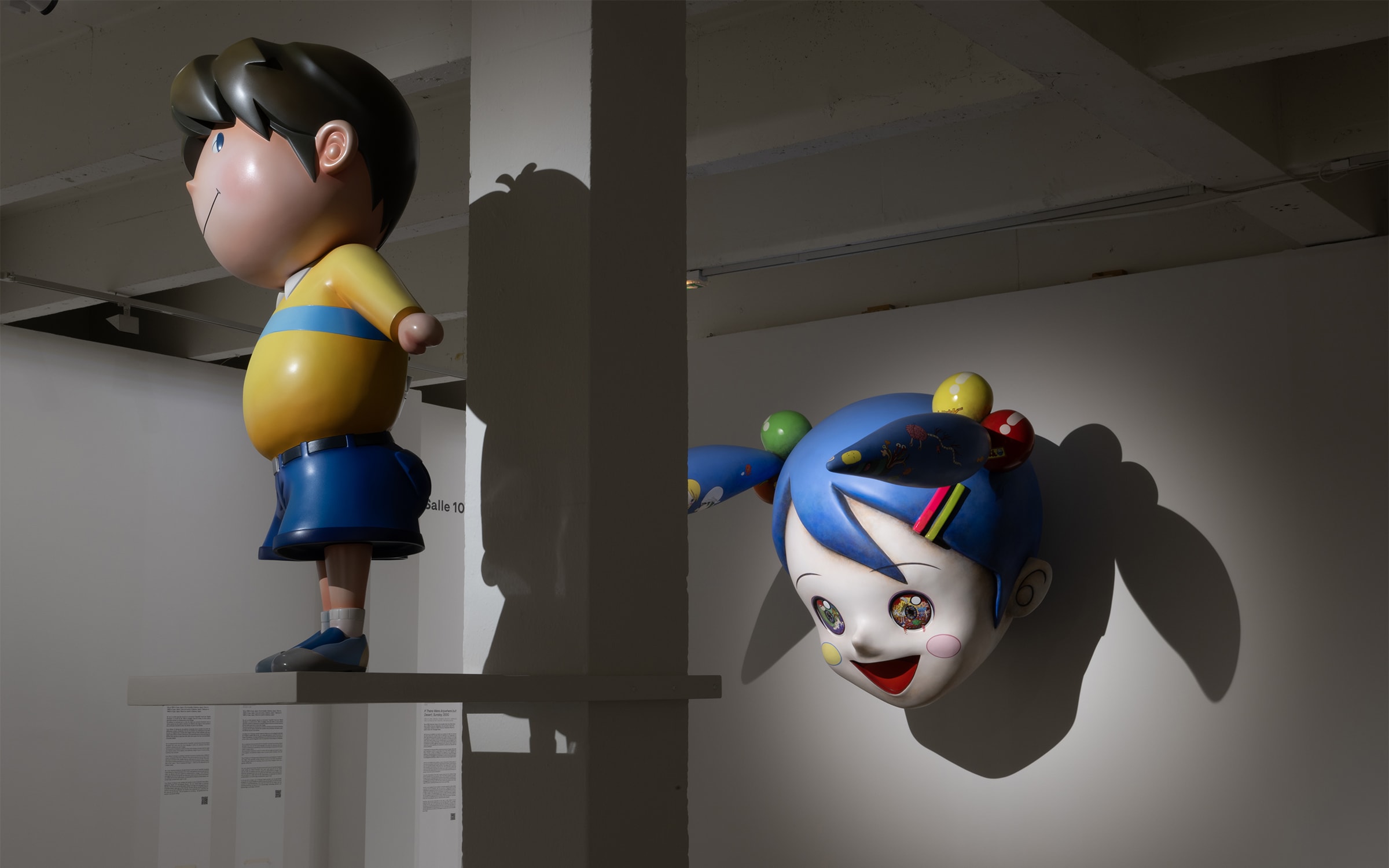María Amalia García, author
Persistent forms: connections between inventionist and neo-concrete art
What would happen if, in addition to acknowledging the standard genealogy that traces the origins of Latin American modern art back to its roots in European abstraction, we were to seek other threads that run through this regional history? That is, active linkages, currents, concepts, procedures, and referents that reappear intermittently in the works and the discourses surrounding them and that, properly considered, might allow us to build a history of Constructive art with regional potency.
European avant-garde movements of the early twentieth century no doubt inspired the abstraction of Inventionist art in Argentina and Uruguay in the 1940s and of Neo-Concrete art in Brazil in the late 1950s, but local practices and referents were key in shaping these Constructive ideas in Latin America. If one looks closely at Inventionist art from Buenos Aires and Montevideo and at Neo- Concrete art from Rio de Janeiro, one can identify such latent undercurrents and come to a more dynamic understanding of South American Constructive art in its various guises. The short-lived, Buenos Aires–based art and literary journal Arturo was the genesis of Inventionism, and both the magazine’s name and its contents problematized aspects of the human (plate 58). During the period of Concrete art’s consolidation, the stamp of the artist was rejected in favor of the objectivity of the picture plane. But in that movement’s aftermath there was a decided return to the human. In Neo-Concrete art, a corporeal dimension opened new paths to experimentation. Indeed, numerous affinities flow between the Inventionist and Neo-Concrete movements.
What, then, are the persistent elements that run through the history of the Constructive avant-garde in the Southern Cone? First, the “cutout,” or irregular, frame. Initially proposed in 1944 by the Uruguayan artist Rhod Rothfuss in an influential essay in Arturo, the idea has a strong affinity with the formal investigations pursued by the Brazilian artist Lygia Clark in her 1954 series Quebra da moldura (Breaking the Frame). Though the two interrogations of painting’s conventional orthogonal frame diverge in certain ways, both formal and conceptual, each capitalizes on the tensions inherent in the fraught line between visual and real space. Second, modern painting’s traditional model of composition within a grid—a central tenet of regional Constructive projects. In this regard, Piet Mondrian’s work was of signal importance to the region, where it was widely disseminated in magazines, books, and exhibition catalogues. The circulation of this imagery opened new fields of research around mechanisms of reproduction and their possible readings. Third, the influence of Carnival. In both Inventionist and Neo-Concrete art, various artistic devices were transformed by the artists’ experience of Carnival. The staging of this exhilarating popular celebration draws not only on skill sets related to dance and its costuming, but also on the techniques and materials involved in constructing Carnival paraphernalia. Carnival thus becomes a reference both for the cutout frame of the Inventionists and for the Parangolés later developed by the Brazilian artist Hélio Oiticica; both of these aesthetic projects were inflected by, if not a direct result of, their proponents’ contact with Carnival’s festive universe.
The historiographies of Inventionism and Neo-Concretism reflect divergent paths. Neo-Concrete art has been extensively studied and exhibited; in recent years, a number of artists from this movement— Lygia Clark, Lygia Pape, and Oiticica most prominent among them— have been the subject of academic research projects and international exhibitions, and with this renewed prominence, Neo-Concrete works have become market phenomena. Inventionist art, on the contrary, has had a far more precarious history, and the movement has been characterized in so many different ways over the years that it has become almost indistinguishable from later artistic developments. Here I use the term Inventionism to refer only to the formative moment of an avant-garde in Buenos Aires and Montevideo in the mid-1940s. (In the visual arts, in the strictest sense, Inventionism’s developments occurred over the course of just two years, 1944 and 1945, with the publication of Arturo and the mounting of the two Inventionist art exhibitions in Buenos Aires at the homes of the psychiatrist Enrique Pichon-Rivière and the photographer Grete Stern, respectively.) Our focus here is on Inventionism’s primary proposal: the cutout frame.
Let’s consider two works of art: Rhod Rothfuss’s Cuadrilongo amarillo (Yellow Quadrangle, 1955; plate 56) and Lygia Clark’s Composição no. 5 (Composition no. 5; plate 13) from her 1954 series Quebra da moldura (Breaking the Frame). Rothfuss’s piece is clearly inspired by Mondrian’s Neo-Plasticism, though it pursues
iry, both at the chromatic level and in the use of relief in its colorful forms. The painting has a conventional structure, except for the fact that the yellow rectangular element on the left is displaced and forces the support to adopt the shape that the painting’s composition proposes. In Clark’s work, canvas and frame are the same surface; the inquiry here involves the interconnection between the painting and the frame. While both Rothfuss and Clark seek to question the tableau, that mechanism par excellence of the “art institution,” their points of departure (and arrival) are quite different. In the case of the irregular frame proposed by the Argentine artist and his cohort, the break operates in a literal sense, altering the conventional structure and making an even surface irregular. In Clark’s work, a spatial dimension is activated on the object’s surface.1
The cutout frame, as we have seen, was first theorized in Rothfuss’s article “El marco: Un problema de plástica actual” (“The Frame: A Problem in Art Today”), published in the final pages of Arturo
(fig. 1). The journal became legendary: its only issue, launched in Buenos Aires in the summer of 1944, was a key element in the transformation of Argentine art and its projections across the Latin American panorama. The generative effort of a group of young artists and poets, the publication has taken on a mythical character: Arturo brought a heady mixture of emerging ideas to a boiling point.
Rothfuss’s text reflected on the frame as a determining element in the visual arts tradition. Although the group that created Arturo quickly dissolved—giving rise between 1945 and 1947 to the groups.
Asociación Arte Concreto-Invención (AACI, Concrete-Invention Art Association), Arte Madí (Art Madí), and Perceptismo (Perceptism)— the visual project that surfaced here, the cutout frame, was the constitutive nucleus of artistic production for many of these artists until the mid-1950s. In his essay, Rothfuss sought to provide a comprehensive vision of art in correlation with certain historic milestones. His starting point was the French Revolution and the ensuing historical need for an almost photographic naturalism. A second moment, marked consecutively (according to Rothfuss) by Post- Impressionism, Futurism, Cubism, Neo-Plasticism, and Constructivism, was guided by an ever more abstract visual inquiry that sought new ways to express “essential reality.” For Rothfuss, however, new problems arose even at the heart of pure visual creation: “Based on compositions either on the rhythms of slanted lines or on triangular or polygonal shapes, Cubism and non-objectivism formulated a new problem: the rectangular frame as impediment to the visual development of the theme.”2
Rothfuss was pointing to the need to break with the structure of the orthogonal frame; for him, the regularity of the support fragmented the form so that the work, though it might be abstract, continued to adhere to the idea of itself as a window, as in naturalist paintings.
A painting with a regular frame causes a feeling of continuity of subject matter, which only disappears when the frame is rigorously structured according to the painting’s composition.
When the edge of the canvas plays an active role in creation—as it always should. A painting should be something that begins and ends in itself. Without interruption. 3
The article was accompanied by three works: Vassily Kandinsky’s Deux, etc. (Two, etc., 1937), which was reproduced on the first page, and on the second and last page Mondrian’s Composition in White, Black, and Red (part of MoMA’s collection since its creation in 1936; plate 140) and Rothfuss’s Trabajo en estudio (Studio Work, 1943–44), a work with an irregular frame. Gabriel Pérez- Barreiro notes that the strategic juxtaposition of the irregular frame and Mondrian’s work creates an implicit comparison: with his textual and visual project, Rothfuss was seeking to supersede European nonfigurative artworks.4 As Pérez-Barreiro further argues, Rothfuss was provoking a debate among international avant-gardes; and
hile this is an important point, we must not lose sight of the local processes that were in play.
Trabajo en estudio (location unknown) is a cutout-frame work that was clearly influenced by the Cubist pictures fellow Argentine Emilio Pettoruti had been painting in the 1930s and early ’40s. It is worth mentioning that in “The Frame” Rothfuss used the term “autumnal Cubist” to refer pejoratively to Pettoruti and his deployment of circles, ellipses, and polygons within a rectangular frame. Pettoruti used this compositional method fairly often, in such works as Orgía II (Orgy II, 1934), Copa verde-gris (Green-Gray Goblet, 1934; fig. 2),
and Tres cigarrillos (Three Cigarettes, 1934).5 For the young Rothfuss, creating compositions with nonrectangular forms and then inscribing them into an orthogonal frame was no solution to what he saw as the fundamental problem of modern painting. If we compare Trabajo en estudio and Copa verde-gris, it is clear that Rothfuss wanted to take Pettoruti’s inquiry a step further and create a type of painting with its own frame—a painting, that is, the internal logic of which would give rise to the form of its support; a painting, as he said in his text, that begins and ends in itself.
Rothfuss’s inquiry into the cutout frame had been underway for many months before the publication of his essay in Arturo. In December 1943, the artist exhibited his paintings at the Ateneo de Montevideo, an important center of cultural resistance in the face of the totalitarianisms of World War II.6 There he showed pieces that could be called “fi gurative irregular frames.”7 Trabajo en estudio was part of this body of work, although it did not appear in the exhibition, at least not under that name. By analyzing the titles listed in the show’s catalogue, we can presume that the works on view were ones with irregular frames that bore resemblance to Pettoruti’s inventions, given their titles that resemble his, such as Botellón (Large Bottle, n.d.), Copa azul (Blue Glass, n.d.), and Copa antigua (Ancient Glass, n.d.). The catalogue also reveals that Arlequín (Harlequin, 1943)—today part of the Colección Patricia Phelps de Cisneros—was shown in the exhibition (fi g. 3).
Rothfuss’s contribution to Arturo would reverberate throughout the artistic circles of Buenos Aires. In that essay, as we have seen, he argued that the autonomy of the surface required that its support be structured in accordance with the composition. He sought the sovereign canvas, one that begins and ends where it wishes, without interruption. This refl ection on the support permeated deep within the heart of Argentine Inventionism. The various groups that arose in the wake of Arturo engaged in a profound investigation of the irregular frame, and despite their diff erences, they developed a common nucleus of interests. The AACI focused on the consequences of space penetrating and interacting with the cutout frame, and in this way their investigation arrived at the “coplanar,” defi ned by Tomás Maldonado, one member of the group, as “the separation in space of the constituent elements of the painting without abandoning their coplanar arrangement.”8 That is, the work is composed of elements whose spatial arrangement remains parallel to the wall and emphasizes the composition’s planar disposition, as in the case of Raúl Lozza’s Relieve no. 30 (Relief no. 30, 1946; plate 65). In a general sense, the Madí artists continued working with the irregular frame, while Lozza, together with his brother Rembrandt, formed Perceptism, which was dedicated to the study of the coplanar.
Other artists, like Maldonado, Lidy Prati, and Alfredo Hlito (plate
100), returned to the orthogonal support, and to a consideration of “the problematic of fi gure versus ground on a surface.”9 For this generation, the breaking of the frame was a problem of surface; the debate did not go beyond a two-dimensional analysis.
FIGURE 4
Installation view of Piet Mondrian gallery at the 2nd Bienal de São Paulo, 1953–54. Arquivo Histórico Wanda
Svevo / Fundação Bienal de São Paulo
FIGURE 5
Image of Mondrian’s Composition in White, Black, and Red published in Arturo. The red line at the bottom edge of the painting (see fig. 1) would have been added before the illustration was tipped into each copy of the magazine. 1944. Lidy Prati Archive, Buenos Aires
FIGURE 6
Page in Círculo y cuadrado (Montevideo), no. 1 (May 1936), with Joaquín Torres- García’s inverted map of South America.
The Museum of Modern Art Library,
New York
For Clark, however, acceptance of the canvas’s spatial dimension allowed her to move away from painting and into the world. In a 1958 text, the Brazilian poet and critic Ferreira Gullar observed that, “In her 1954 attempt at including the frame as part of the picture, Lygia Clark may have been unaware that this would lead to the destruction of pictorial space and, subsequently, to the rediscovery of a space that is no longer separate[d] from the world but that, on the contrary, borders it directly, penetrating it even as it allows itself to be penetrated by it.”10 Composição no. 5, as Paulo Herkenhoff has noted, is her offering of pictorial space to the world.11 The work is articulated through a unique body that engages both the canvas and the wood that one would have expected to constitute the frame. In subsequent works, Clark at times incorporated the wall into her interventions, further underscoring the objectlike nature of painting. ––
In 1959, Clark wrote a letter to the deceased Mondrian, seeking advice about the future of her work and underscoring the spiritual dimension that united them: “If I work, Mondrian, I do so first and foremost to fulfill myself in the highest ethical-religious sense, not to make some surface or other. . . . If I show my work, I do so to transmit to another person this ‘moment’ stopped by the cosmological dynamic, which the artist captures.”12 As previously noted, Mondrian was also a reference point for practitioners of Inventionism, as evidenced by the reproduction of his Composition in White, Black, and Red in Rothfuss’s Arturo essay.




















